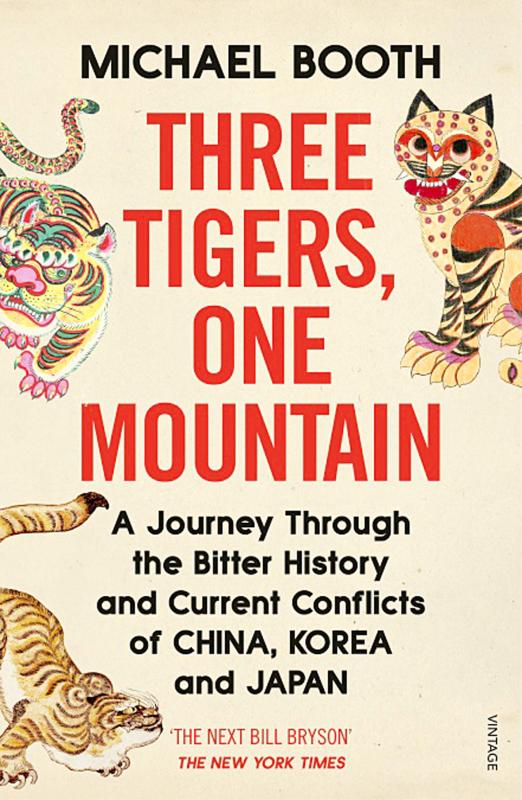This pleasant and easy-to-follow book aims to investigate the hostility the author thinks exists between Japan, South Korea and China, plus (almost as an afterthought) an antagonism he claims to exist in Taiwan towards South Korea. He pursues his prime purpose by undertaking a journey that begins and ends in Taipei and involves traveling to Tokyo, journeying south, and then crossing to South Korea. Once there he goes north in zigzag fashion until he reaches the border of North Korea. He then crosses to China, goes up to Harbin, and makes his way south all the way to Hong Kong, and from there back to Taipei.
The author engages on his investigation partly by looking at the histories of the countries he travels through, but mostly by talking to minorities within the countries themselves. He shows his skills early on when looking at the status of Koreans in Japan. He discovers there are roughly half a million people living in Japan of Korean ancestry, called zainichi. Those with connections to South Korea are called mindan, those connected to the north chongryon. There are many schools that teach Korean language and culture, and the extraordinary fact the author unearths is that most of them are funded by Pyongyang.
Hostility to Koreans in Japan is apparently widespread, and many long-term residents from Korea attempt to disguise their origins by changing their names. Our author sees this hostility as having it roots in Japan adopting the same quasi-colonialist policy towards Korea in the 19th century as the US had adopted to Japan itself. But even so, he expresses enormous liking and sympathy for the Japanese whenever the occasion arises, and this will, we quickly discover, set the tone for the rest of the book.

As well as interviewing people with Korean connections, Michael Booth also travels extensively throughout central Japan, discussing what he sees in its own right. Thus he discovers that the controversial Yasukuni Shrine to the war dead is considered a difficult issue even by ordinary Japanese, who often refer to it as “the Yasukuni problem.”
In South Korea, Booth finds that, though past wars with Japan, including one where noses were cut off to prove how many Koreans had been killed, had left animosity, the young in general adored Japan and did everything they could to get there.
Generally, however, the Korean chapters are about Korea itself, not attitudes to foreigners living there. There’s K-pop, male cosmetics, suicides, smart phones (these last three more common than in any other country on Earth) and past dictatorships and their atrocities. All this goes to show that Three Tigers, One Mountain is as much an overview of the region as an investigation into specific inter-racial hostilities, its ostensible subject.
The section on China begins with the notorious Unit 731, Japan’s germ warfare station during their invasion of China, near Harbin. Booth encounters continuing hostility to the Japanese later on, when a Taiwanese historian teaching in Shanghai, Chang Chih-yun, says that his students think of them as “Barbarians. Savages. Devils. Japanese devils, that’s the common take.” Even so, nearly eight million tourists visited Japan from China in 2018.
Booth thinks he would like to live in Nanjing. He also meets someone there who thinks Japanese society is among the most civilized anywhere in the world, but laments the fact that its politicians make sure the Nanjing Massacre of 1937-38 is given scant coverage in Japanese school textbooks. And in Shanghai he finds a widespread reluctance to talk about the fact that there were Chinese “comfort woman” during World War II as well as Korean ones.
When he reaches Hong Kong, Booth feels he’s bristling with excitement at the energy and geographical unlikeliness of the place. Even his over-arching theory that it was the British who were responsible for most of East Asia’s woes, rather than the Americans, gets successfully argued against. After a brief stay, however, he moves back to where he started from, Taipei.
The full title of this book is Three Tigers, One Mountain: A Journey Through the Bitter History and Current Conflicts of China, Korea and Japan and refers to a Chinese proverb that two tigers can’t share the same mountain.
Strangely enough, the first thing I heard of about this book concerned the alleged anti-Korean bias in Taiwan. This turns out, though, to amount to only a very few pages, and be based on chats with three named people and one anonymous commentator. Booth’s most illustrious source is the politician Hsu Yu-jen, who he refers to as Jason Hsu without mentioning that there is another Taiwanese in the public eye with the same name. The political Jason Hsu is quoted as saying “Taiwanese people loathe South Koreans. It goes back to when South Korea broke ties with Taiwan in favor of China in the early 1980s.”
Apart from this bizarre opinion, which the author of the book has admitted to a learned foreign resident of Taiwan was a misplaced late addition, Taiwan gets political coverage but little of the geographical input afforded to Japan, South Korea and China. Booth’s view is nonetheless very positive. Taiwan is a beacon of democracy, free speech and human rights in East Asia, he rightly holds.
“The young Chinese people I spoke to told me that it was to Taiwan, not Japan, Europe, or the United States, that they looked to for pop culture trends in fashion, design and food,” he writes. “Young Chinese are chasing authenticity. Taiwan is at the forefront in the Mandarin world in terms of the hipster scene, the artisanal baristas, craft beer, that loose, woolen, natural clothing … the vegan look.”
All in all, the truth of the matter may well be that of the four nations treated in this book, Taiwan is the only one that has no serious problems with anyone else, the obvious differences with Beijing excepted. This is an enjoyable book and by and large highly recommended.

April 14 to April 20 In March 1947, Sising Katadrepan urged the government to drop the “high mountain people” (高山族) designation for Indigenous Taiwanese and refer to them as “Taiwan people” (台灣族). He considered the term derogatory, arguing that it made them sound like animals. The Taiwan Provincial Government agreed to stop using the term, stating that Indigenous Taiwanese suffered all sorts of discrimination and oppression under the Japanese and were forced to live in the mountains as outsiders to society. Now, under the new regime, they would be seen as equals, thus they should be henceforth

Last week, the the National Immigration Agency (NIA) told the legislature that more than 10,000 naturalized Taiwanese citizens from the People’s Republic of China (PRC) risked having their citizenship revoked if they failed to provide proof that they had renounced their Chinese household registration within the next three months. Renunciation is required under the Act Governing Relations Between the People of the Taiwan Area and the Mainland Area (臺灣地區與大陸地區人民關係條例), as amended in 2004, though it was only a legal requirement after 2000. Prior to that, it had been only an administrative requirement since the Nationality Act (國籍法) was established in

Three big changes have transformed the landscape of Taiwan’s local patronage factions: Increasing Democratic Progressive Party (DPP) involvement, rising new factions and the Chinese Nationalist Party’s (KMT) significantly weakened control. GREEN FACTIONS It is said that “south of the Zhuoshui River (濁水溪), there is no blue-green divide,” meaning that from Yunlin County south there is no difference between KMT and DPP politicians. This is not always true, but there is more than a grain of truth to it. Traditionally, DPP factions are viewed as national entities, with their primary function to secure plum positions in the party and government. This is not unusual

US President Donald Trump’s bid to take back control of the Panama Canal has put his counterpart Jose Raul Mulino in a difficult position and revived fears in the Central American country that US military bases will return. After Trump vowed to reclaim the interoceanic waterway from Chinese influence, US Defense Secretary Pete Hegseth signed an agreement with the Mulino administration last week for the US to deploy troops in areas adjacent to the canal. For more than two decades, after handing over control of the strategically vital waterway to Panama in 1999 and dismantling the bases that protected it, Washington has